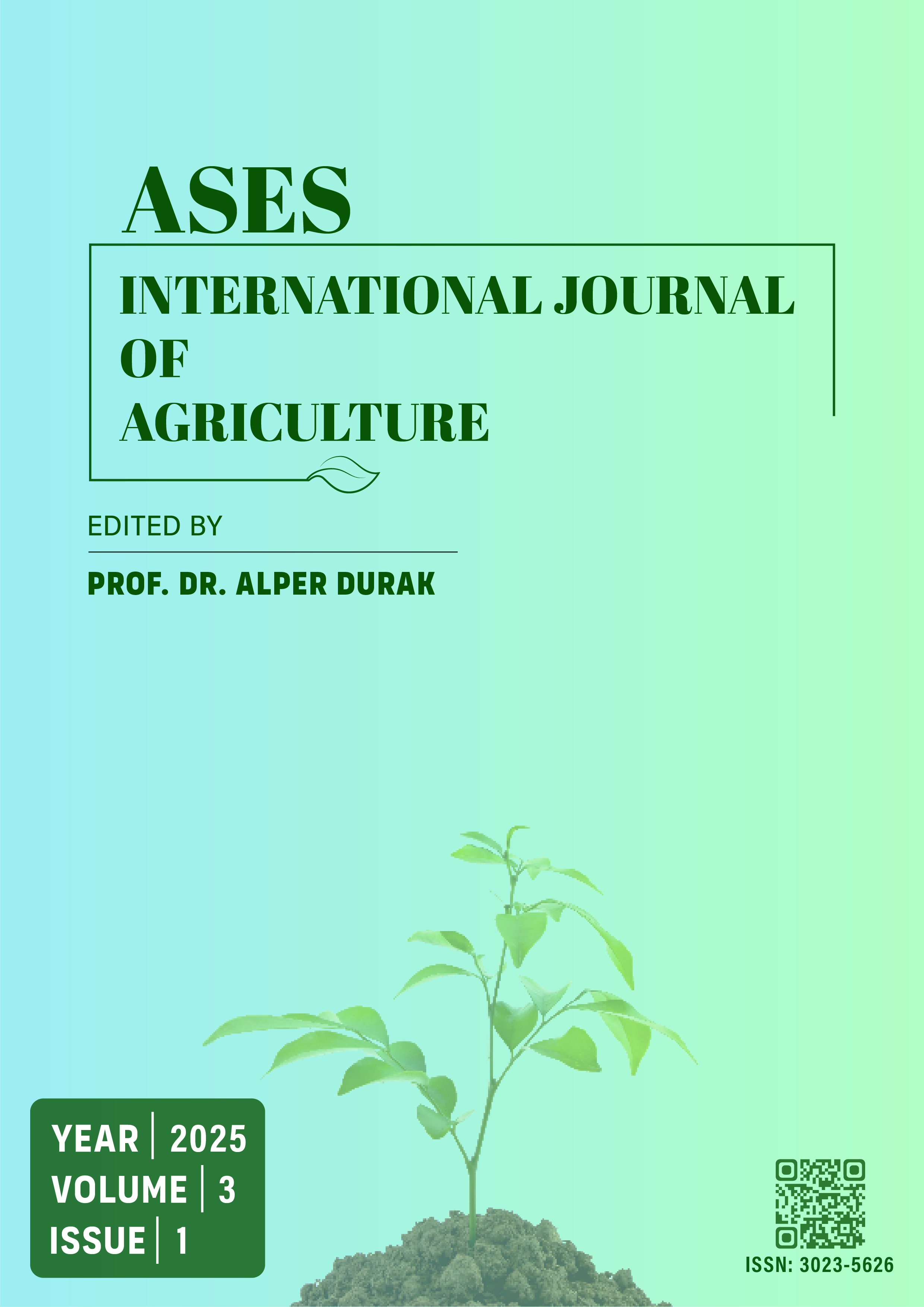Investigation of the Effect of Nettle (urtı̇ca dioı̇ca and urtı̇ca urens) on Shelf Life “Ketchup Without Bite”
DOI:
https://doi.org/10.5281/zenodo.15698165Keywords:
Ketchup, Food additives, Shelf life, NettleAbstract
In this study, we found that many people today also often eat fast food. and as a condiment with food and as an ingredient in the ketchup, and we have come up with an alternative, unadulterated, all-natural It is aimed to produce sauce (ketchup). Individuals' personal needs nutrition is under great threat from convenience foods. This threat is threatened by It has been revealed as a result of research that it directly affects the body. Made in When the studies are examined, it is revealed that people do not know these damages very much. emerged. For these reasons The proportions of the ingredients used in ketchup were determined and the additives used natural or less processed substances were used instead. En importantly, it has antioxidant properties instead of additives that prolong shelf life. the shelf life of the sauce (ketchup) produced using stinging nettle is aimed to be determined. Healing nettle (Urtica dioica and Urtica urens), which is characterized as a plant, natural lecithin in its structure acts as a preservative thanks to the lecithin. has been determined as a result of research. Nettle (Urtica dioica and Urtica urens) is both protective and healing thanks to the food additives used as preservatives in many packaged foods can be used instead of additives. Purpose, Contributing people that they can eat the food they want without being exposed to substances is to show Protecting the health of individuals and building a cleaner future is adopted as a basic principle. Pay attention to sterile conditions during the production of sauces has been made. Taste, odor and consistency similar to ready-made sauces (ketchup) In order to examine the effect of nettle (Urtica dioica and Urtica urens), two different sauces (ketchup) prepared. In order to protect the shelf life of the sauce determined as the experimental group nettle was substituted for the additive. The control group did not receive no additives were made. Produced under the same conditions as experimental and control groups sauces were sent for analysis to compare their shelf life. Radix Analyzer According to the analysis results sent by the laboratory, the hypothesis was confirmed and the sauce with nettles is 23 days longer than the sauce without nettles life span has been proven. In line with these results, nettle (Urtica dioica and Urtica urens) has a significant amount of protection it is possible to say. Additives that extend the shelf life of the prepared sauce nettle can be used instead of nettle. In this sense, the area will make a contribution.
References
Arslan, S. (2021). Hayıt tohumu tozunun sığır köftelerinin çeşitli kalite özellikleri ve raf ömrü üzerine etkisinin araştırılması. Nevşehir Hacı Bektaş Veli Üni.Fen Bilimleri Ens. Yüksek lisans tezi.
Bağcı, T. 1997. Gıda katkı maddeleri ve sağlığımız üzerine etkileri. Hacettepe Tıp Dergisi, 28(1).
Balakar, Ö. (2023). Organik ve konvansiyonel fındıkların raf ömrü çalışması. Ordu Üni. Fen Bilimleri Ens. Yüksek lisans tezi.
Bıldır, B., Demircan, H., Oral R.A. (2018). Sıcaklık ve farklı kıvam verici maddelerin ketçabın reolojik özellikleri üzerine etkileri. Avrupa Bilim ve Teknoloji Dergisi, (14).
Bilgin, M.G., Bayır, A.G., Türk, S.N., Ucaş, İ., Özkan, B. (2022). Bireylerin gıda katkı maddeleri ve etkileri konusunda bilgi ve farkındalık durumlarının değerlendirilmesi. İstanbul Rumeli Üniversitesi Sağlık Bilimleri Dergisi, 1(1).
Boğa, A., Binokay S. (2010). Gıda katkı maddeleri ve sağlığımıza etkileri. Arşiv, 19.
Bulut, T.E., Kenanoğlu, Z. (2022). Tüketicilerin fast food ürünlerine yönelik tüketim tercihleri. İzmir ili örneği. Ege Üni. Ziraat Fak. Dergisi, 59 (1).
Coşkun F., Çotra Y. (2019). İstanbul ilinde satışa sunulan domates salçalarında sorbik asit ve benzoik asit varlığı. Trakya Üniversitesi Mühendislik Bilimleri Dergisi, 20(2).
Çalışır, Z.E., Çalışkan, D. (2003). Gıda katkı maddeleri ve insan sağlığı üzerine etkileri. Ankara Ecz. Fak. Dergisi, 32 (3).
Diatek, (2012). Ketçap nedir ve nasıl üretilir? Erişim: https://diatek.com.tr/ArticleDetail.aspx?Article=249
Erkmen, O. (2010). Gıda kaynaklı tehlikeler ve güvenli gıda üretimi. Çocuk Sağlığı ve Hastalıkları Dergisi, 53.
Esin, A. (1999). Gıda katkı maddeleri. Seminer, H.Ü.T.F., Halk Sağlığı A.D.
Karakahya, F., Başımoğlu Koca, Y. (2016). Gelişmekte olan tavuk karaciğeri üzerine gıda katkı maddesi sodyum benzoatın etkileri. Cumhuriyet Üniversitesi Fen Fakültesi Fen Bilimleri Dergisi (CFD), 37(2).
Karatepe T.U., Ekerbiçer H.Ç. (2017). Gıda katkı maddeleri. Sakarya tıp dergisi, 7(4).
Korkmaz, F. (2010). Isırgan otu ekstresinin kolon kanseri hücre serileri üzerindeki apoptotik, antiproliferatif ve antioksidan etkilerinin araştırılması. T.C. Ankara Üni. Sağlık Bilimleri Ens. Yüksek lisans tezi.
Kutluay, H. (2023). Lesitin nedir, faydaları nelerdir? Erişim: Lesitin Nedir, Faydaları Nelerdir? (makaleler.com)
Özdemir, H., Turhan, A.H., Arıkoğlu, H. (2012). Potasyum sorbat, sodyum benzoat ve sodyum nitrit’in genotoksik etkilerinin araştırılması.
Özgün, D., Küşümler A. (2020). Gıda katkı maddelerinin sağlık üzerinde etkileri. Sağlık ve Yaşam Bilimleri Dergisi, 2 (1).
Özpolat, E., Dikici, A., Koluman, A., Patır, B., Çalıcıoğlu, M. (2017). Biberiye Esansiyel Yağı ile Dekontaminasyonun Gökkuşağı Alabalıklarının Kalite Özellikleri Üzerine Etkisi. Fırat Üniversitesi Sağlık Bilimleri Veteriner Dergisi, 31(2).
Tekle, Ş. (2019-2020). Gıda katkı maddeleri. Erişim: https://akademik.ahievran.edu.tr/kullanicidosyalar/files/G%C4%B1da%20Katk%C4%B1%20Maddeleri(4).pdf
Türk Gıda Kodeksi Gıda Katkı Maddeleri Yönetmeliği, Tarım ve Orman Bakanlığı T.C Resmî Gazete Tarihi: 13/10/2023, Resmî Gazete Sayısı: 32338.
Ünlü, D., Bayır, A.G. (2022). Koruyucu gıda katkı maddeleri ve sağlığa etkisi. Akademik Et ve Süt Kurumu Dergisi, (4).
Downloads
Published
How to Cite
Issue
Section
License
Copyright (c) 2025 Ebrar Kurt, Şirin Demircan Yıldız

This work is licensed under a Creative Commons Attribution 4.0 International License.



